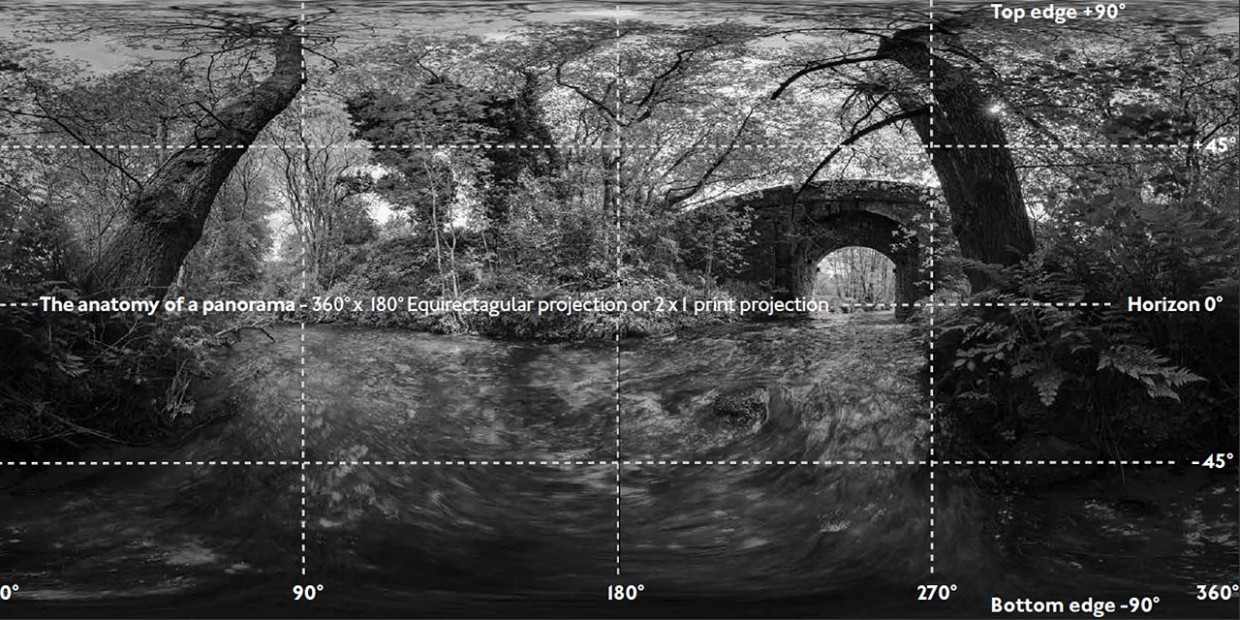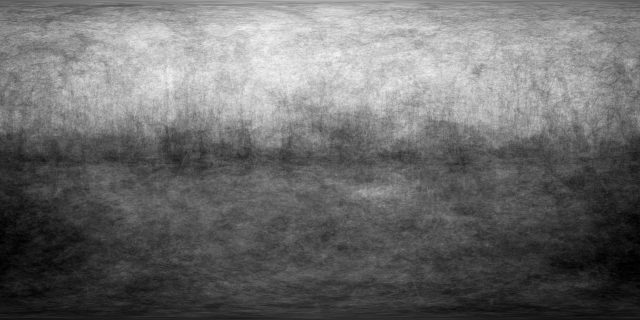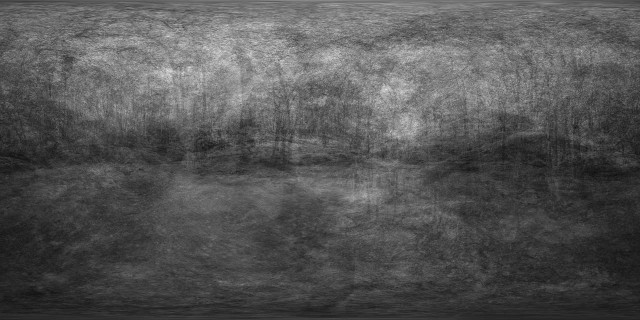I have been working for many years shooting panoramas and was curious to see if I was following any particular repetitive compositional formula. Could I discover and illustrate this formula or perhaps unlock my own personal style?
Panoramas follow strict technical criteria. If you are shooting man made structures, rooms and buildings for example. Like the boxes that they are, the composition repeats itself over and over. They have function but are boring from a creative point of view. At least, in my opinion.
 Compositional anatomy of a 360° x 180° Equirectangular projection or 2 x 1 print projection
Compositional anatomy of a 360° x 180° Equirectangular projection or 2 x 1 print projection
If you shoot the environment these technical criteria are still present in acquiring the panorama but you have the ability to be creative in your composition. What is above and below you? How close to a tree, to a rock or the surface of a flowing river?
In panorama ‘proximity’ is essential in creating form in the final image print projection. So how do I shoot a 360° environment? How do I crop an image that is of everything around me? Would I follow the golden rules of composition? Could I discover this from comparing and contrasting my imaging?
To test or even answer this dilemma I decided to combine my Eden portfolio panoramas using an image stack (like a tall sandwich of images) to discover if there are any forms, any shadows, that continuously present themselves? If so, would I have discovered my eye? My style?
This is how ‘AVERAGE’ came about and work from this portfolio has been exhibited in the United Kingdom and France.
The conclusion I have come to is that I’m certainly repeating a process but the composition is quite fluid. The blended results, as prints, are often mistaken for etchings or charcoal drawings by the viewers.
The .pdf document below goes into much more detail, contains the processing and imaging in full.
AVERAGE – Exploring Composition in Panorama .pdf
Paul Stewart



